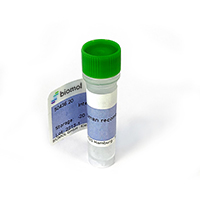Cookie preferences
This website uses cookies, which are necessary for the technical operation of the website and are always set. Other cookies, which increase the comfort when using this website, are used for direct advertising or to facilitate interaction with other websites and social networks, are only set with your consent.
Configuration
Technically required
These cookies are necessary for the basic functions of the shop.
"Allow all cookies" cookie
"Decline all cookies" cookie
CSRF token
Cookie preferences
Currency change
Customer-specific caching
FACT-Finder tracking
Individual prices
Selected shop
Session
Comfort functions
These cookies are used to make the shopping experience even more appealing, for example for the recognition of the visitor.
Note
Show the facebook fanpage in the right blod sidebar
Statistics & Tracking
Affiliate program
Conversion and usertracking via Google Tag Manager
Track device being used

| Item number | Size | Datasheet | Manual | SDS | Delivery time | Quantity | Price |
|---|---|---|---|---|---|---|---|
| B0902-01C.50 | 50 µg | - | - |
3 - 19 business days* |
871.00€
|
If you have any questions, please use our Contact Form.
You can also order by e-mail: info@biomol.com
Larger quantity required? Request bulk
You can also order by e-mail: info@biomol.com
Larger quantity required? Request bulk
Beta-Defensin 3, also known as BD3 and DEFB-3, is a membrane-active cationic peptide that... more
Product information "BD3, Recombinant, Human (beta Defensin-3)"
Beta-Defensin 3, also known as BD3 and DEFB-3, is a membrane-active cationic peptide that functions in inflammation and innate immune responses. There are at least 30 beta-Defensins which are distinguished from alpha-Defensins by the connectivity pattern of their three intramolecular disulfide bonds (1). The 45 aa mature human BD3 shares 38% and 33% aa sequence identity with mouse and rat BD3, respectively (2, 3). It shares 18%-36% aa sequence identity with other human beta-Defensins. BD3 is widely expressed among epithelial tissues, notably by keratinocytes and airway epithelial cells. It is upregulated in response to proinflammatory cytokines, microbial and viral infections, and at the edges of skin wounds (2, 4-6). BD3 induction in osteoarthritis chondrocytes promotes MMP1 and 13 production and inhibits TIMP1 and 2 expression (7). In vivo control of BD3 activity is accomplished in part through cleavage by cathepsins B, L, and S (8). BD3 displays strain specific microbicidal activity toward a broad spectrum of bacteria and yeast (2, 9). BD3 also induces monocyte migration, mast cell activation, and a mast cell-dependent increase in vascular permeability (4, 10). Disruption of the intramolecular disulfide bond pattern in BD3 abrogates its monocyte chemoattractant properties but not its antimicrobial properties (11, 12). BD3 inhibits viral infectivity by interacting directly with HIV-1 plus its coreceptor CXCR4 (5, 13), and with HSV glycoprotein B plus its receptor heparan sulfate (14), and by forming a protective coating on the surface of influenza virus target cells (15). Source: A DNA sequence encoding the mature human Beta-Defensin 3 (Gly 23-Lys 67, Accession # NP_061131) was expressed in E. coli. , Definition: Measured by its ability to promote internalization of cell surface CXCR4 on the Jurkat human T cell-line. Applications: Suitable for use in Western Blot. and Flow Cytometry. Other applications not tested. Recommended Dilution: Flow Cytometry: As determined by flow cytometric analysis, the effect is typically a 2-3 fold reduction in fluorescence intensity of Jurkat cells stained with a CXCR4 antibody following a 2 hour pre-treatment with 10ug/ml human Beta-Defensin 3 compared to untreated cells., Western Blot: 5.2kD SDS-PAGE under reducing conditions., Optimal dilutions to be determined by the researcher. Storage and Stability: Lyophilized powder may be stored at 4°C for short-term only. Reconstitute to nominal volume by adding sterile acetic acid and store at -20°C. Reconstituted product is stable for 12 months at -20°C. For maximum recovery of product, centrifuge the original vial after thawing and prior to removing the cap. Further dilutions can be made in assay buffer.
| Keywords: | HBD3, BD-3, hBD-3, DEFB-3, DEFB103A, Beta-defensin 3, Beta-defensin 103, Defensin, beta 103, Defensin-like protein |
| Supplier: | United States Biological |
| Supplier-Nr: | B0902-01C |
Properties
| Application: | FC, WB |
| Conjugate: | No |
| Species reactivity: | human |
| Format: | Highly Purified |
Database Information
| KEGG ID : | K23126 | Matching products |
| UniProt ID : | P81534 | Matching products |
| Gene ID | GeneID 414325 | Matching products |
Handling & Safety
| Storage: | -20°C |
| Shipping: | +4°C (International: +4°C) |
Caution
Our products are for laboratory research use only: Not for administration to humans!
Our products are for laboratory research use only: Not for administration to humans!
Information about the product reference will follow.
more
You will get a certificate here
Viewed




